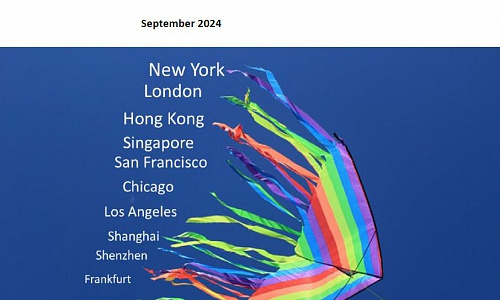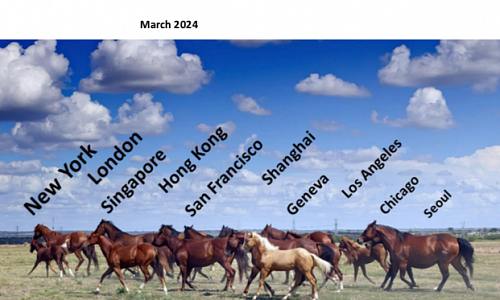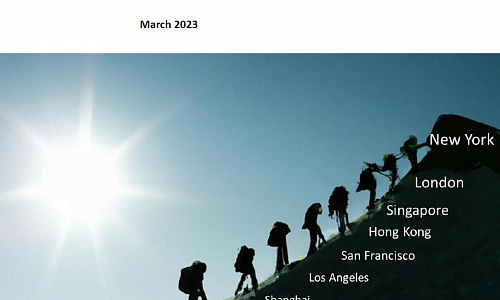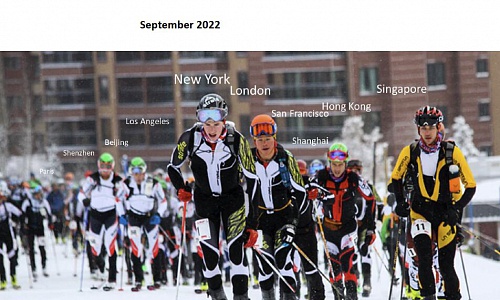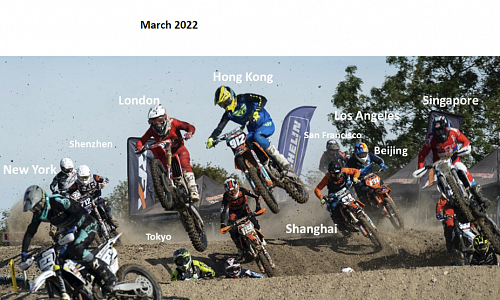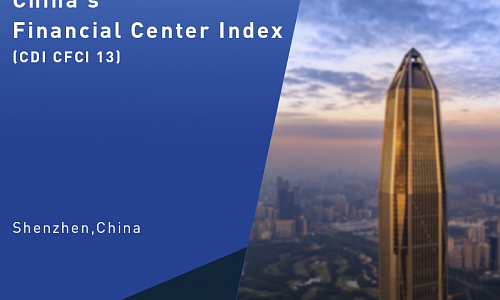
2018 - News
 On July 10, 2018, CDI and PanamAsia, an international financial service company jointly hosted a routable themed on the financial cooperation under Belt and Road Initiative. In terms of lowering the financial risks of the Belt and Road Initiative project, both parties believed that the project should attract more public and non-governmental capital. What is more, the representatives of PanamAsia pointed out that numerous of French enterprises are anxious to be involved in the projects along the Belt and Road Initiative, therefore, being more transparent would bring more opportunities to Belt and Road Initiative.
On July 10, 2018, CDI and PanamAsia, an international financial service company jointly hosted a routable themed on the financial cooperation under Belt and Road Initiative. In terms of lowering the financial risks of the Belt and Road Initiative project, both parties believed that the project should attract more public and non-governmental capital. What is more, the representatives of PanamAsia pointed out that numerous of French enterprises are anxious to be involved in the projects along the Belt and Road Initiative, therefore, being more transparent would bring more opportunities to Belt and Road Initiative.
 On April 2, the president of Anari, Mr. William Anawaty visited CDI to learn the development path and experience of Shenzhen's innovation. Both parties reached consensus that the new economy mode serves as a stronger driver for Shenzhen's dynamic growth since 1978. And the reform of innovative mechanism will continue to advance Shenzhen's future development.
On April 2, the president of Anari, Mr. William Anawaty visited CDI to learn the development path and experience of Shenzhen's innovation. Both parties reached consensus that the new economy mode serves as a stronger driver for Shenzhen's dynamic growth since 1978. And the reform of innovative mechanism will continue to advance Shenzhen's future development.
 One May 7, 2018, CDI and AmCham jointly organized a timely event titled “Dagger Drawn: What does U.S.-China Trade Standoff Mean for You?” in Hong Kong. The panel discussion focused on the current U.S.- China trade tension and the impact on business in the region. During the discussion, the panelists talked about the prospects of the trade war and the possibility to avoid it. CDI expert and fellow panelists stated that two countries have significant difference on culture, social structure, institution as well as two different economic systems. To solve the friction, two countries need to establish an inclusively frequent communication and docking mechanism on the basis of equality and mutual benefit. Moreover, China's future economic, industry and trade development should serve to strive win-win result for both countries. CDI expert pointed out that there are still rooms for transnational companies to expand in China, even under the current moment. Companies should well study and interpret the national strategic planning for development to seek opportunities.
One May 7, 2018, CDI and AmCham jointly organized a timely event titled “Dagger Drawn: What does U.S.-China Trade Standoff Mean for You?” in Hong Kong. The panel discussion focused on the current U.S.- China trade tension and the impact on business in the region. During the discussion, the panelists talked about the prospects of the trade war and the possibility to avoid it. CDI expert and fellow panelists stated that two countries have significant difference on culture, social structure, institution as well as two different economic systems. To solve the friction, two countries need to establish an inclusively frequent communication and docking mechanism on the basis of equality and mutual benefit. Moreover, China's future economic, industry and trade development should serve to strive win-win result for both countries. CDI expert pointed out that there are still rooms for transnational companies to expand in China, even under the current moment. Companies should well study and interpret the national strategic planning for development to seek opportunities.
 Dr. Shamshad Akhtar, Under-Secretary-General of the United Nations and Executive Secretary of the United Nations Economic and Social Commission (ESCAP), and Dr. Mia Mikic, Director of the Trade, Investment, and Innovation Division of ESCAP, visited CDI and had discussions on joint research on the Belt and Road Initiative (BRI) with CDI experts. Dr. Akhtar said that BRI, which will enhance integration in Asia-Pacific region, will facilitate the implementation of the 2030 Agenda for Sustainable Development and that BRI need to address challenges of infrastructure connectivity, trade costs, sovereignty debts, labor skills etc. UNESCAP and CDI agree to promote cooperation on research related to trade, investment, transport, and innovation to ensure policy coordination in the implementation of BRI and the 2030 Agenda for Sustainable Development.
Dr. Shamshad Akhtar, Under-Secretary-General of the United Nations and Executive Secretary of the United Nations Economic and Social Commission (ESCAP), and Dr. Mia Mikic, Director of the Trade, Investment, and Innovation Division of ESCAP, visited CDI and had discussions on joint research on the Belt and Road Initiative (BRI) with CDI experts. Dr. Akhtar said that BRI, which will enhance integration in Asia-Pacific region, will facilitate the implementation of the 2030 Agenda for Sustainable Development and that BRI need to address challenges of infrastructure connectivity, trade costs, sovereignty debts, labor skills etc. UNESCAP and CDI agree to promote cooperation on research related to trade, investment, transport, and innovation to ensure policy coordination in the implementation of BRI and the 2030 Agenda for Sustainable Development.
 Any country needs to react on the trade friction or trade war. In the regard of trade deficit, President Trump is not focusing on trade related issues. He is targeting intellectual property rights, China’s high-tech industry, “Made in China 2025” development strategy which are really about growth, development and emergence of China.
Any country needs to react on the trade friction or trade war. In the regard of trade deficit, President Trump is not focusing on trade related issues. He is targeting intellectual property rights, China’s high-tech industry, “Made in China 2025” development strategy which are really about growth, development and emergence of China.
In the long-term, Sino-US trade tension definitely will cause negative impact for both America and China, as well as other countries since China is part of the supply chain.
We need to understand that the long-term interest is to enjoy long-term continuous and sustainable growth. In time people will get used to China’s growth. Now they are not used to it yet.
In terms of further opening up of China, it is a fundamental interest. We have been opening up in the past 40 years. As a result, we became stronger, and more used to international market, its risks, fluctuations, and sometimes crisis. As we are more sophisticated in dealing with these risks, we can open further. And as we grow up we need to take responsibilities for human kind and global community. Further opening up implies a lot of tasks at hand, for example, composition of new policy; then afterwards people need to adapt to the new institution. It’s not easy but it’s time.
As to Chinese macroeconomic development trend in the near future, we should know that there is risk in the economy at any given time. We are already at the bottom, part of, not a V curve, but rather a L curve. Now we are on the vertical line at the bottom, which is not long, but we still have some distance to go. In other words, we are in the process of bumping at the bottom and cannot immediately bounce back to high growth. This cycle is a normal process. Hopefully we can use this opportunity to fix our problems, e.g. overcapacity and financial risk, in order to have better growth in the next stage of economic development.

Integration of Asian economy has been a phenomenon for a long time. It is not organized, but rather created by market forces and integrated into supply chain. There is division of labor. Everybody has its position, special competitiveness and comparative advantage in the supply chain. Because it is market driven, competitiveness is real.
The natural formation of this chain of values can be attributed to a lot of factors, for example, culture, stabilities, government efforts and policies. Started with East and Southeast Asia, now Central and Southern Asia, people realized that joining the global supply chain under globalization and regionalization is essential for economic development. At the beginning, Japan led the flock, then there were the Four Asian Tigers, and Tiger Cub Economies, then mainland China. This is the result of market forces and the competitiveness is real. Asia has become the most interesting, dynamic place in the world and contributed to 60% of global GDP growth. Therefore, we need to put more analytical effort in order to show the world why it happened.
US and Europe are in the upturn of economy and export to those two markets has increased in recent years. The only problem is looming trade frictions, causing worrisome which may in turn cause downturn. This shows that when you have trade friction with one country, it causes chain effect on the others. Everyone else will feel the impact because we are on the same supply chain. That’s why anti-globalization is indeed anti globalization because anti one country means anti globe.
As for the current protectionist impulse, we do need to face and deal with it. We should continue on with globalization and market supply chain even though we have trade friction with one or two countries. It is our strength that we can continue to do business with the other countries. A new term “Emerging Asia” proposes a dynamic Asia. We will not only do business with developed Asia like Japan and South Korea, but also emerging countries in Asia.
 On March 12, CDI held China-Africa Special Economic Zones Seminar in Coate d’Ivoire with representatives from Ministry of Industry and Mines of Coate d’Ivoire, African Export-Import Bank, Agency of Management and Development of Industrial Infrastructure (AGEDI) and Funds of Development of Industrial Infrastructure (FODI), Made in Africa Initiative, and Chinese enterprises in Coate d’Ivoire attending. CDI experts gave presentations about development experience of Chinese special economic zones and made suggestions for industrialization of Africa and strategies of industrial zones in Coate d’Ivoire.
On March 12, CDI held China-Africa Special Economic Zones Seminar in Coate d’Ivoire with representatives from Ministry of Industry and Mines of Coate d’Ivoire, African Export-Import Bank, Agency of Management and Development of Industrial Infrastructure (AGEDI) and Funds of Development of Industrial Infrastructure (FODI), Made in Africa Initiative, and Chinese enterprises in Coate d’Ivoire attending. CDI experts gave presentations about development experience of Chinese special economic zones and made suggestions for industrialization of Africa and strategies of industrial zones in Coate d’Ivoire.
 CDI held an innovation roundtable with Mr. Del Christensen, Chief of Business Development of Bay Area Council, to discuss cooperation between the Guangdong-Hong Kong-Macao Greater Bay Area and San Francisco Bay Area on March 14. The two organizations exchanged views on technology innovation, emerging industries, talents in the two Bay Areas and explored opportunities to do joint research and co-host events.
CDI held an innovation roundtable with Mr. Del Christensen, Chief of Business Development of Bay Area Council, to discuss cooperation between the Guangdong-Hong Kong-Macao Greater Bay Area and San Francisco Bay Area on March 14. The two organizations exchanged views on technology innovation, emerging industries, talents in the two Bay Areas and explored opportunities to do joint research and co-host events.
 On March 23, CDI and the Italian Institute for International Politics jointly held the roundtable discussion in Milan, Italy, to explore the new cooperation mode between Asia and Europe. Participants from different countries reached a consensus that the “Belt and Road” Initiative shall be served as coordination bond of the Eurasia multilateral cooperation mechanism. China and the EU can also join hands to seek more cooperation opportunities in third-party markets through deepening political mutual trust. Moreover, the cooperation between China-EU should deliver more benefits to people from countries along the “Belt and Road” and strive to give new impetus into Eurasia cooperation and economic globalization.
On March 23, CDI and the Italian Institute for International Politics jointly held the roundtable discussion in Milan, Italy, to explore the new cooperation mode between Asia and Europe. Participants from different countries reached a consensus that the “Belt and Road” Initiative shall be served as coordination bond of the Eurasia multilateral cooperation mechanism. China and the EU can also join hands to seek more cooperation opportunities in third-party markets through deepening political mutual trust. Moreover, the cooperation between China-EU should deliver more benefits to people from countries along the “Belt and Road” and strive to give new impetus into Eurasia cooperation and economic globalization.

On January 12, Dr. Partha Mukhopadhyay from Centre for Policy Research visited CDI to learn the experience of and challenges for China’s urbanization and share the experience of Indian pharmaceutical industry. Senior Research Fellow Dr. Ruan Meng and Ms. Feng Yueqiu, Director of International Cooperation from CDI introduced industrial transformation and urban development of Shenzhen and the status quo of the Guangdong-Hong Kong-Macao Greater Bay Area, while Dr. Partha Mukhopadhyay introduced India’s flexible and inclusive regulations related to the pharmaceutical industry which enable the access to affordable and effective drugs for low-income people.


